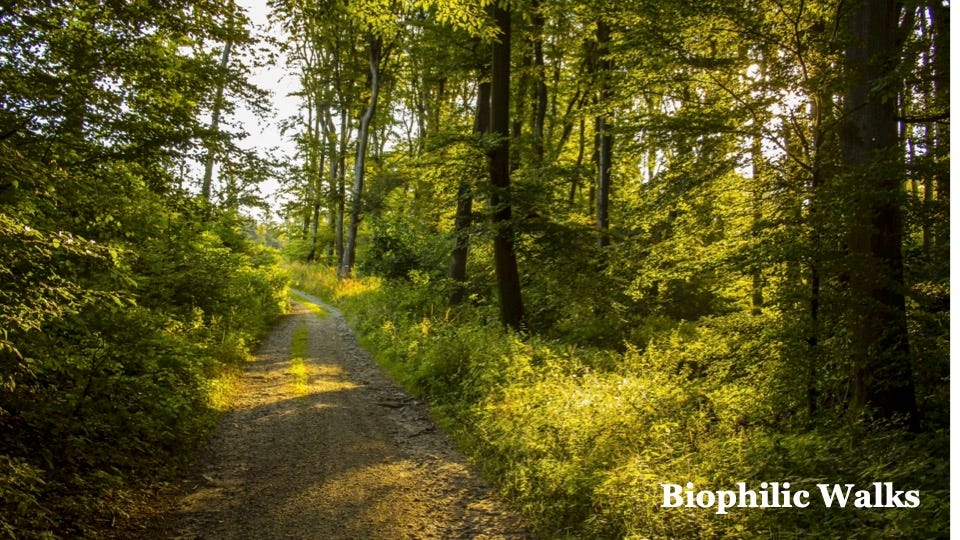Notes on becoming Nature-Positive.
... We cannot bend the biodiversity curve through guidance, checklists and spreadsheets alone.
“ … and working with nature, truly working with nature, we will find that she can do much of the decarbonisation heavy lifting for us in the built environment”
From our Living Future Europe Storms or Starlight session at COP27 for the UN Action Hub - as a reflection on whether we see fixing problems (Storms) or working with the potentials (Starlight) as our primary course of action.
Nature-Positive is a theme that has weaved through Regen Notes and Zoom Regenerative sessions since COP15. And so now in one way, it is encouraging to see a raft of publications, guides and playbooks.
Bending the Curve on Biodiversity Loss
The 15th United Nations Biodiversity Conference (CBD COP15) December 2022 culminated with the Kunming-Montreal Global Biodiversity Framework (GBF) – setting a global ambition to halt and reverse biodiversity loss by 2030.
This was and is a key milestone for nature action, the equivalent of a “Paris (1.5) Agreement” for nature, raising nature to the same level as climate and carbon on the global agenda.
Nature Connected Organisations Handbook
Miles Richardson and Team (see Reconnecting) provide a step-by-step guide for organisations to connect with nature. The Nature Connected Organisations Handbook is a guide that helps organisations connect with nature for sustainable futures and workplace wellbeing. It emphasizes the interlink between the climate and nature crises and how both are potentially catastrophic for humankind. The guide provides information on the importance of nature connection, how to grow nature connectedness, and how to become a nature-connected organisation. It also includes a Tree Framework for nature-connected organisations and real-life examples of nature-connected organisations in practice.
Embodied Ecological Impact
Similar to embodied carbon, embodied ecological impacts are caused by the resource extraction and manufacturing process, such as the production and transportation of raw materials and the disposal of unused materials. These impacts occur offsite, mainly via materials extraction and the supply chain. Local, on-site impacts of the built environment on biodiversity are not included in this definition.
Embodied Ecological Impact from the UKGBC provides guidance on understanding and reducing ecological impacts in the built environment through the resource use mitigation hierarchy, circular economy principles, and supply chain engagement. It emphasizes the need for materiality screening, biodiversity strategies, and leadership commitment to achieve sustainability goals. The document also highlights the global biodiversity crisis and the efforts to protect nature and biodiversity through the Global Biodiversity Framework and the Taskforce for Nature-related Financial Disclosures. The article aims to raise awareness of ecological impacts, advocate for a holistic view of nature, and identify hot spots of ecological impacts in the supply chain
Roadmap to Nature Positive Foundations for the built environment
From the World Business Council for Sustainable Development: Contributing towards a nature-positive future means acting across the full value chain of the built environment system. Four key stages are identified to describe the built environment value chain in the life cycle of a project and it is recommended that every company starts its assessment with the value chain framing question to clarify which of the value chain stages corresponds to their direct operations.
→ Materials extraction and production (upstream) → Design and construction (direct operations)
→ Operations and maintenance (downstream)
→ Demolition and waste (downstream).
This WBCSD roadmap builds on a description of impacts, risks, opportunities and priority actions across these four value chain stages. Note that built environment dependencies on nature are covered directly through the identification of risks.
Biodiversity Roadmap (Construction Leadership Council)
The Biodiversity and Environmental Net Gain Working Group, a workstream of the Green Construction Board, has launched a consultation on its Biodiversity Roadmap. The roadmap aims to ensure that more nature is embedded in the built environment and that the agenda moves from biodiversity net gain to environmental gain. The consultation document and the accompanying thought piece can be accessed via the link below. The Consultation survey is available here. The Consultation Document is available here. and a Consultation accompanying thought piece is available here.
The Embodied Biodiversity Impacts of Construction Materials
Reflecting the need for the industry to respond to the accelerating biodiversity crisis, Expedition has published a major research report into the Embodied Biodiversity Impacts of Construction Materials. The report takes a first step to enabling those working in the built environment to understand how biodiversity is impacted throughout the lifecycles of five common construction materials.
…. but, do we need more (checklist) guidance?
Nature herself is our best guide and teacher for a nature-positive journey. Nature doesn't need more and more checklists and spreadsheets, what it does need is a lot more love, care and a deeper sense of kinship.
We cannot bend the biodiversity curve through guidance, checklists and spreadsheets alone
Perhaps the best start for a journey in becoming nature-positive is to take a walk in nature with your team, project team, organisation, or board. And importantly to take and give that time and space to reflect, to notice, to feel and ask the question - “how can we bring the wonders of nature into our organisation”
Many organisations are seeing Nature as a key stakeholder (Patagonia), having a voice in the boardroom through a Director for Nature (Faith in Nature) or seen as a partner (Ramboll) or as I have done, naming and grounding a business in place (Fairsnape). The key is having a nature conscious within the organisation at the highest level.
How to give nature a voice ...
Delighted to read Giving Nature a Voice by Brontie Ansell in the latest edition of the Permaculture magazine where she explores how to appoint Nature as a company director, how that works legally, and the impacts of such a radical shift in mindset. Something that resonates so well with the nature-p…
I have been known to ask a question during sustainability audits when reviewing projects “If nature had a voice at your project meeting table what would it be saying, and how would you respond”
There are many well established and exciting routes to becoming nature positive. In the Regenerative Playbook, we suggest the four laws of ecology from Barry Commoner.
Everything is connected, There is no waste in nature, Nature knows best There is no such thing a free lunch in nature.
Through Zoom Regenerative and here on Regen/Notes we have regularly surfaced the principles of Permaculture and the wonderful indigenous honourable harvest as shared by Robin Wall Kimmerer
We have had the Living Building Challenge since 2006 and it has been probably the best and most nature-positive aligned standard for built environment sustainability, conceived as a visionary pathway to regenerative futures that are nature-positive.
The ILFI Declare Label provides the fact-based label for materials and products, akin to a food nutrient label, that details not only the ingredients and carbon footprint but where the material has come from, how it will be used and end-of-life scenarios, importantly detailing the impact on nature (and us as humans) along this pathway.
For more on nature-positive support around the topics raised above please do get in touch.
Sustainability collaboration is dying, long live co-creation ...
Zoom Regenerative (59) returns on October 24th at 8 pm UK once more exploring Regenerative Patterns.
Can a simplified Patterns perspective help ease individuals and organisations into regenerative practices? Can pattern thinking help our shift away from siloed collaborative working to more regenerative co-creativity? Join Jo Petroni, Martin Brown and guests in conversation.
Plus our meet & greet speed breakouts and the great ZR regenerative conversation.







